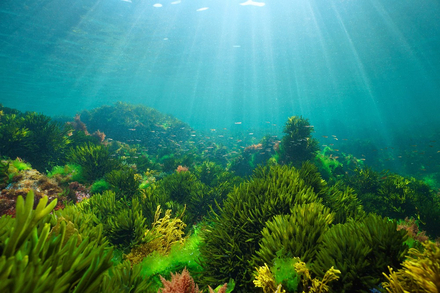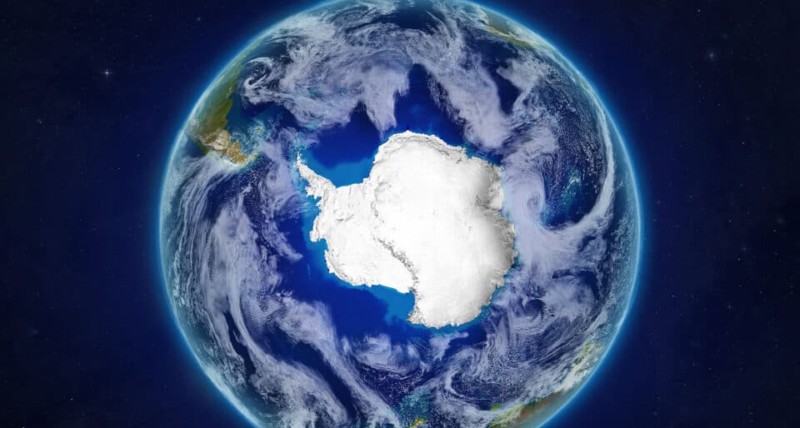Beneath the waves lies a fascinating world of intricate plant formations. From the kelp forests of cold waters to the carpets of sargassum in the Caribbean, and the delicate Asian nori, marine algae shape the landscape of the oceans. Invisible to most, they play a crucial role: they generate oxygen, nourish and shelter abundant biodiversity, while offering valuable resources to humans.
For millennia, they have been harvested, cultivated, transformed, and integrated into food, medicine, and industry. But while they attract unprecedented economic interest, their unregulated exploitation and the effects of climate change threaten their balance. Faced with these challenges, one question arises: how can we sustainably manage this living heritage without compromising its future?
A Biological and Economic Global Heritage
Marine algae are incredibly diverse. In the North Atlantic, majestic brown kelps form vast underwater forests, serving as true refuges for fish, crustaceans, and marine mammals. Alongside them, red and green algae, rich in carrageenan and agar-agar, have become essential to the food industry.
In the Mediterranean, warmer conditions foster a more discreet but equally essential flora: algae with unique pigments, capable of withstanding intense light and waters lower in nutrients. Their properties are of particular interest to biotechnology, especially in pharmaceutical and cosmetic research.
The Indian Ocean and the Pacific offer unmatched richness. It is here that the famous algae cultivated in large quantities are found: nori, the key ingredient for Japanese sushi rolls, wakame, used in soups and salads, and gracilaria, widely used for agar production. Large-scale seaweed farms are multiplying, feeding a rapidly growing market.
Finally, at the poles, resilient species cling to the frozen seabeds, playing a fundamental ecological role. Some, like Palmaria palmata, rich in proteins, may well become a major food alternative in the future.
But what makes algae so captivating is also their varied applications. The food industry adopts them for their wealth of nutrients: vitamins, proteins, fibers, antioxidants… Once limited to Asian cuisine, they are now making their way into Western dishes. In the industrial sector, they are used in cosmetics, gelling agents, and even bioplastics. Scientists are discovering new possibilities every day: biofuels, polluted water filtration, CO2 sensors… They are no longer just marine plants but a pillar of sustainable innovations.
The Importance of Sustainable Management of Algal Resources
Behind this enthusiasm, a concerning reality emerges. The growing demand is putting pressure on certain species and threatening entire ecosystems. The overharvesting of kelp in Brittany or Norway, the chaotic development of nori farms in Asia, and the proliferation of invasive species due to maritime trade, are all examples of these tensions.
When algae disappear, entire food chains begin to unravel. Kelp forests, for example, serve as shelter for juvenile fish and a pantry for otters and seals. Their decline, observed notably in California and Tasmania, disrupts marine balance. Furthermore, their role as carbon sinks, crucial in the fight against climate change, is jeopardized.
To address these challenges, several solutions are emerging. Sustainable aquaculture could be a solution: instead of depleting wild resources, algal farms allow for controlled production, reducing pressure on ecosystems. However, they need to be well-regulated: some intensive farming operations deplete water quality and cause ecological imbalances.
Regulations are being put in place, but their implementation remains uneven. In France, certain harvesting areas are already subject to quotas and fallow periods. In Indonesia and the Philippines, programs are attempting to balance farming with reef conservation. But without stricter international coordination, the risk of overexploiting certain species remains.
Perspectives: Algae Facing Future Challenges
Paradoxically, algae could become a key lever to tackle tomorrow’s environmental crises. They absorb CO2 with impressive efficiency, helping to mitigate global warming and ocean acidification. Some species are even capable of purifying water by capturing nitrates and heavy metals. By restoring seaweed meadows, researchers hope to regenerate degraded marine ecosystems and improve biodiversity.
But their future is also linked to food. As the demand for protein surges and agricultural land decreases, algae emerge as a promising alternative. Their nutritional richness makes them an ideal candidate to feed humanity: some species contain up to 50% protein, as well as omega-3, minerals, and fibers. Projects are emerging to integrate algae on a large scale into animal and human diets. Startups are even exploring the use of algae flour to reduce dependence on soy and limit deforestation.
The potential is immense, but it depends on intelligent and responsible management. Uncontrolled exploitation could destabilize fragile ecosystems, while overly strict conservation policies could stifle beneficial innovations. Finding a balance will be the challenge of the coming decades.
Marine algae are much more than a simple resource: they are a living heritage, a pillar of biodiversity, and a solution to the climate and food challenges of tomorrow. But for them to fulfill their promises, their exploitation must be managed with rigor and respect for ecosystems. Between opportunities and threats, they stand at a decisive crossroads.
In a world where oceans are under increasing pressure, their preservation is no longer a luxury but a necessity. The question, therefore, is not whether algae can play a central role in the future, but whether we will protect them in time. The answer depends on our ability to combine progress and responsibility. Will we rise to the occasion?
Source: figaronautisme




